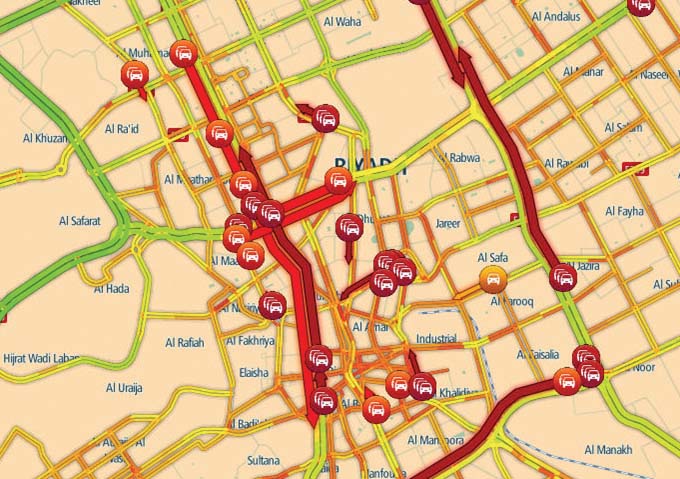
Data-derived traffic management is starting to show benefits as David Crawford discovers.
The city of Boston has been facing growing congestion problems in its Seaport regeneration district, with the rate of commercial and residential growth threatening to overtake the capacity of the road network to respond. The area has some 276 hectares of planned development recently built or permitted, but completion of the programme was not initially scheduled before 2025, at which point the existing transportation infrastructure was due to reach maximum capacity.
The pace of change has, however, overtaken most long-term predictions. It stems largely from long-term investments in road transport improvements, which have made Seaport, once relatively inaccessible, highly attractive to investors and incoming employers and now the location of a thriving innovation district.
Its uplift has followed progressively on from the December 2003 completion of the US$14.6bn ‘Big Dig’ highway improvement, which has given Boston’s downtown a fast road tunnel connection to the city’s Logan airport.
Previously, Seaport and the waterfront area had been largely cut off by the then elevated Central Artery that the tunnel replaced. Now the district and Boston’s downtown were properly connected and development began.
But growth brings traffic, and region-wide problems have kept Greater Boston among the US’ 20 most congested cities. In a bid to address the issue, Seaport has become the site of one of the earliest urban deployments of the Connected Citizens Program, launched in October 2014 by Google-owned traffic and navigation app developer
Information flow
The Program delivers a two-way information flow. A local government can agree to provide Waze with key traffic information – for example, on incidents and road closures that it is managing – for inclusion in route mapping so that drivers can navigate around them. In this way, the municipality can help to meet its responsibilities to keep motorists informed on roadway obstructions - standards for reporting of which Waze developed in 2014 - by sending the data direct to the users of the technology.
In return, the city benefits from being able to access the results of data being continuously generated by the GPS-enabled app, which displays route maps and informative icons for motorists’ guidance. While it remains open on the dashboard - whether or not it is being used for navigation - the underlying system passively collects and analyses real-time travel information including average speeds along the road segments being driven.
Also available is information that is actively being generated by drivers using buttons on the app to report on, and give the location of, traffic jams and hazards that they encounter along their journeys. The outcomes translate into road condition updates for sharing with other drivers and Program members.
Public-sector digital mapping technology developer
Esri has developed templates for road closure reporting that integrate seamlessly with the app technology, and built a dedicated software connector. This allows real-time GIS-based data generated as people move about a city, to flow into local government systems for use in emergency dispatch as well as in traffic management.
Boston joined the Connected Citizens Program following the setting up of a dedicated Citywide Data Analytics Team by new mayor, Martin J Walsh. (Inducted in 2014, he was - according to local press reports - the first holder of the office to have a computer on his desk. His predecessor had served continuously since 1993).
The Program makes available two main datasets – ‘Jams’ and ‘Alerts’. If a major jam emerges in an unexpected location, a traffic management centre operator can monitor its progress and report back on the situation, to help to find a solution. This is what happened in Seaport, in one of the Team’s first initiatives.
Connected citizens
The city was able to use data coming in via the Connected Citizens Program to identify which signalised intersections (out of the 550 that it remotely controls including where Seaport Boulevard meets Atlantic Avenue) were contributing the most to levels of congestion in the area.To probe further, it then used a statistical package developed by the R Consortium - users of the R programming language, an open-source tool for statistical computing and graphics developed for hi-tech industries.
The city’s Transportation Department was then able to calculate the extent to which it could beneficially adjust the signal timings at the affected intersections. Having defined and enacted the signalling changes, it assessed the effect by using ‘Jam’ data to monitor what became an 18% reduction in congestion over a six-month period. The city’s traffic management centre now has continuous access to ‘piped-in’ data, which it uses to identify other trouble spots as they occur from day-to-day.
The city has also used Program data in its most recent ‘Don’t Block the Box’ campaign, aimed at deterring drivers from nosing prematurely into intersections. It identified 14 problem points and applied three different treatments spread over a month, using both passive auto-detection of traffic decisions and driver-reported hitches to decide the best treatment for each.
It has also drawn on the data to enable a better understanding of the impacts on neighbourhood street flows of the decision to demolish an overpass, and so inform its interim traffic management plan.
Other initiatives have involved sending a strike team of bike-mounted parking enforcement officers to areas highlighted by Program reports as suffering badly from infringements, and monitoring the results. The reports have also enabled the evaluation of the impact of a protected bike lane in the city on both congestion levels and the driving experience.
Waze head of new business development and data acquisition Paige Fitzgerald, sees the new approach as potentially offering an alternative to ‘Internet of Things’-style arrays of fixed networks of infrastructural sensors. Cities could rely instead on crowdsourced real-time reports direct from the road, she argues.
The Esri-Waze link-up started when a local government Esri user (which was already systematically mapping its road closures) wanted to make wider use of the data. Esri’s civic technology product manager Andrew Stauffer then contacted the app developer, to explore ways of working together.
“It was logical that a road authority should want to share its open data with a purpose, and provide the information to a commercial mapping company,” he told ITS International. “While we were not active with the Waze community at that time, it helped us to understand how we could take our analyses further. As a Program partner, Boston can leverage ArcGIS tools to share or use data. Our spatial analytics and real-time capabilities can augment what’s already been done.”
Esri has experienced more than 500 downloads of its Local Government Information model, which includes a road closures layer that can be fed to Waze.
There are now over 65 million users of the app and Waze makes its money from sales of data and location-based advertising. Boston is one of the 10 earliest local government members of the Connected Citizens Program, along with Los Angeles, the states of Utah and Florida, New York Police Department, and the cities of Barcelona (Spain), Jakarta, (Indonesia), San José (Costa Rica) and Tel Aviv (Israel). Globally, the Program has more than 100 partners.
A recent recruit is Winnipeg, Canada’s seventh largest city, in advance of opening a new transportation management centre. Local residents are being publicly urged to download the app. The Program website invites other interested local governments to use it to join. Stated acceptance criteria include access to supplementary sources of traffic data - for example, sensor- or camera-derived; technical capability; and ‘eagerness and readiness to innovate.’
ABOUT THE AUTHOR: David Crawford has spent 20 years writing about and researching ITS and is a Contributing Editor to ITS International.









